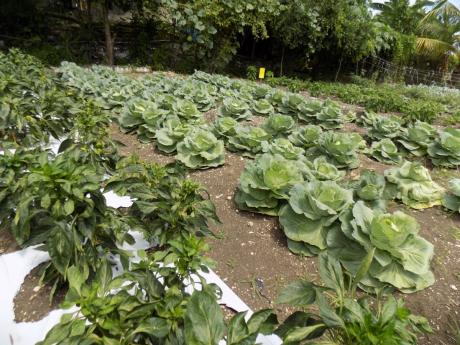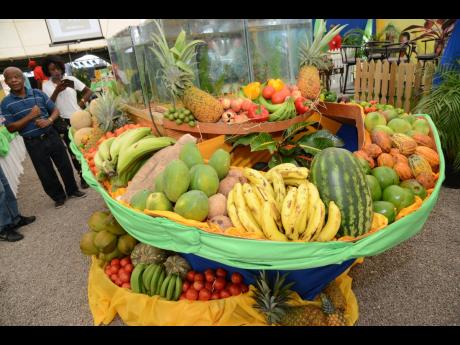AgriMin doubles down on missed targets in new strategic plan
The Ministry of Agriculture and Fisheries (MOAF) has unveiled nine strategic objectives it hopes to knock off its working list before December 2025, but it may prove to be a tall order for the ministry to fill, having flunked on the majority of its targets for the fiscal year that just ended in March.
Only five of the ministry’s 13 key performance indicators were on track at the end of the FY 2020-21, largely due to COVID-19’s impact on the economy and the GOJ countermeasures that have restricted select activities such as travelling and face-to-face interactions, reduced budgetary support, as well as a decrease in production due to reduction in demand in select sectors.
Other factors that contributed to the low amount of “on track” projects, the ministry said in its strategic business plan 2024-25, include drought followed by excessive rains that led to the destruction of crops or stalling of land-preparation activities.
Projects that were bumped off the ministry’s list for the past fiscal year fell mostly under the programme ‘Agricultural Production, Productivity and Food Security’. It involved targets such as boosting the production of priority crops such as Irish potato, onion, and strawberry for import substitution; having 60 per cent or more of arable lands in agricultural production; the establishment of nine agro parks; and 99 per cent reduction in pests, diseases, and pathogens in plants and animals.
The ministry is on track with actions to increase agricultural production by 10 per cent to meet targeted markets as well as to have at least eight plans, policies, and legislation developed and amended to respond to sector issues.
For the 2021-22, the MOAF has a bigger budget – a combined $9.4 billion in annual recurrent and capital expenditure – that it will use to fund the strategic plan. It near doubles a budget of $5.5 billion the ministry was allocated for FY 2020-21.
That should get the wheels of the project moving, but the ministry – which is tasked with developing sustainable food systems by driving local production of primary agricultural produce, livestock, and fisheries – still has to find workarounds for the ongoing gathering and movement restrictions associated with COVID-19 pandemic and periodic supply issues affecting the market.
Some of its targets have also been doubled in the race to regain lost ground to the pandemic.
Its objectives over the medium term under the agribusiness strategic plan forms the foundation for the ministry’s 2030 vision, which speaks to an innovative, inclusive, and sustainable internally competitive agriculture sector. The plan will see the ministry taking steps to increase the agriculture and fisheries production and value-added production by 10 per cent annually.
The ministry will also be looking at ways in which it can increase the application of appropriate technology by Jamaican farmers, agricultural producers, and ‘agroentrepreneurs’ by 20 per cent for the four-year period. It is also tasked with the development and implementation of 20 supporting policy, legal, and planning frameworks that will protect agricultural lands, aquatic ecosystems, plant genetic resources, livestock genetic resources, and fisheries resources, as well as to develop and begin implementation of action plans in the agriculture and agri-business sectors.
The remaining four targets are focused around increasing the access of micro, small, and medium agro-enterprise to adequate infrastructure, finance, and support services by 10 per cent over the next four years; allocating and optimally using human and financial resources based on agreed national and MOAF priority policies; as well as upgrading targets of having at least 20 per cent of beneficiaries of MOAF’s programmes being youth, women, persons with disability, or any vulnerable group from the agriculture sector; and reducing the incidence of select pests, and increasing agricultural exports by 20 per cent at the end of 2025.
Work on the projects will be carried out in a collaboration with the private sector, agencies, and ministries responsible for industry development.
“The priority policies and actions to be pursued by the ministry over the immediate to medium term will be geared at building more for the agricultural sector, building market-driven production, building sustainability and resilience, as well as ensuring and promoting innovation and expanding the use of technology to improve productivity,” the ministry noted.
For the period January to June 2021, the agriculture sector grew 10.3 per cent amid recovery from the COVID-19 pandemic, trailing top performer construction, which expanded by 18.3 per cent and has grown consistently throughout the health crisis when others have faltered.


